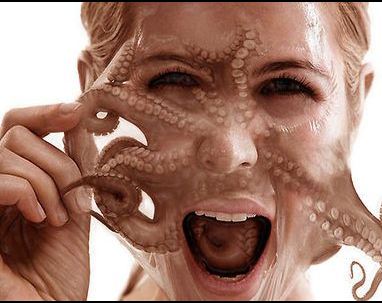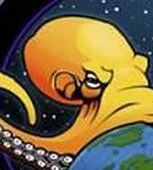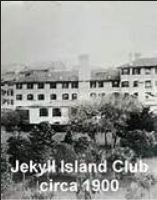Contents
- Introduction
- Preface
- Overview
- Relief Valve
- LECTURE 1: Why We Are In The Dark About Money
-
LECTURE 2: The Con
- The Banker Explained - The Wizard of Oz
- Why Do We Need Banks?
- What Bank Supervision?
- Banks Too Big To Fail
- Banks Cheat
- Banks and Money Laundering
- Banks Sell Drugs
- Money is NOT the same as Currency
- Currency Markets Are Rigged
- HFT High Finance Trading Predators
- Libor
- London Gold Fix Proof of Bank Manipulation
- QE Quantitative Easing
- A Trust Deficit Caused by Predator Bankers' Secrets
- HSBC The Pirate Bank
- HSBC The Dirtiest Bank
- Propaganda
- Banks Role in Terrorism
- The Octopus
- The First Banks in America
- History of Banking – Index (by date)
- Wealth Distribution and Why do the Rich Get Richer?
- Learn How Lobbyists Buy Politicians
- Commerce Without Conscience
- The Shattered American Dream
- United States Treasury Department
- About Gold and Fort Knox
- Paying Taxes in April
- Lecture 2 Objectives and Discussion Questions
- LECTURE 3: The Vatican-Central to the Origins of Money & Power
- LECTURE 4: London The Corporation Origins of Opium Drug Smuggling
- LECTURE 5: U.S. Pirates, Boston Brahmins Opium Drug Smugglers
- LECTURE 6: The Shady Origins Of The Federal Reserve
- LECTURE 7: How The Rich Protect Their Money
- LECTURE 8: How To Protect Your Money From The 1% Predators
- LECTURE 9: Final Thoughts
Statecraft proves Policy.
Policy proves Collective Agreement.
Agreement proves Collusion.
Collusion proves a Strategy.
Strategy proves this is not a "theory"!
“We no longer have permanent principles, but permanent interests, which we pursue to the exclusion of all else.”
- Lord Palmerston, British Prime Minister at the time of the Opium Wars
Banks + Academia + Secret Societies + Media + Technology + NSA, DOD, CIA etc =
The Old Boys Network of Anglo Saxon Colonialism technologically enslaving the world.
"The public be damned!" — William H. Vanderbilt, railroad magnate, 1882 The Purpose of the Senate explained in 1906 and nothing has changed!
STATECRAFT STRATEGY PROVES THIS IS NOT A "CONSPIRACY THEORY"
The Broadcasting Board of Governors- BBG funded by spooks
BBG has a $721 million budget provided by Congress, reports to the Secretary of State and is managed by a revolving crew of neocons and military think-tank experts. Among them: Kenneth Weinstein, head of the Hudson Institute, the arch-conservative Cold War-era military think tank; and Ryan C. Crocker, former ambassador to Iraq, Afghanistan, and Syria. Although today’s BBG is no longer covertly funded via the CIA’s black budget, its role as a soft power “psychological warfare” operation hasn’t really changed since its inception. The BBG and its subsidiaries still engage in propaganda warfare, subversion and soft-power projection against countries and foreign political movements deemed hostile to US interests. And it is still deeply intertwined with the same military and CIA-connected intelligence organizations — from USAID to DARPA to the National Endowment for Democracy and BBG runs a propaganda network that blankets the globe.
2016 The opium farmers with the police on their side Opium poppy cultivation in Afghanistan (1994-2015)
Edward Snowden: "If the government will not represent our interests," he says, his face serious, his words slow, "then the public will champion its own interests. And whistle-blowing provides a traditional means to do so." [The Most Wanted Man In The World 2014 ~ James Bramford]
INFRASTRUCTURE
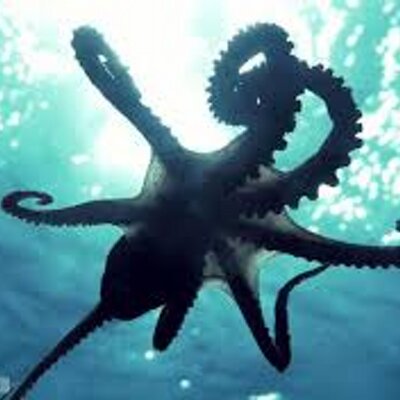 SECRECY and PRIVACY FOR THE .001%
SECRECY and PRIVACY FOR THE .001%
GOLDMAN SACHS Meet Goldman Sachs, the Vampire Squid VIDEO
Offshore Banking: Panama Papers | Tax Havens
The Way GCHQ Obliterated The Guardian’s Laptops May Have Revealed More Than It Intended Jenna McLaughlin Aug. 26 2015
Transnational Crime Organizations on Wall Street: HSBC, JP Morgan Chase, Citi, Deutsche Bank, Goldman Sachs and the other big banks using Symphony Communications. The company’s website boasts that it has special tools to “prevent government spying,” and “there are no backdoors,” and that “Symphony has designed a specific set of procedures to guarantee that data deletion is permanent.”
Russian Railways The routing of the trade makes no business sense and allows for unnecessary costs to be added or prices to be marked up for no added value. Selling products to yourself or close business partners is a technique often used in many countries to evade taxes, embezzle funds or launder money.
2016 Unaoil owned by the Ahsani family reponsivle for the worst bribery & kickback scandal in history and laundered money through the City of London. In the list of the world's great companies. Many countries have laws on the books that make executives at firms engaged in bribery personally, criminally liable. Maybe this, finally, will be the moment when we learn how far the impunity of the criminal elites really goes.
Unaoil is nowhere to be seen.
But for the best part of the past two decades, the family business from Monaco has systematically corrupted the global oil industry, distributing many millions of dollars worth of bribes on behalf of corporate behemoths including Samsung, Rolls-Royce, Halliburton and Australia's own Leighton Holdings. Now a vast cache of leaked emails and documents has confirmed what many suspected about the oil industry, and has laid bare the activities of the world's super-bagman as it has bought off officials and rigged contracts around the world.
Part 2 Unaoil, which specialises in paying bribes to win government contracts for many of its clients. The massive leak of confidential files from inside Unaoil’s operation shows that, to help Petrofac win contracts, Unaoil paid bribes to officials in countries including Kazakhstan, Kuwait and Iraq. It also shows Warner appears to have had an active role in managing these payments. In early October 2006, Warner directed Unaoil to send at least $2 million to one of Vanagel’s front companies, via a company in the Marshall Islands, a tax haven in the Pacific Ocean. In part two we will turn to the impoverished former Russian states to reveal the extent of misbehaviour by multinational companies including Halliburton. The leaked files reveal that some people in these firms believed they were hiring a genuine lobbyist, and others who knew or suspected they were funding bribery simply turned a blind eye.
CFR member Corporations bought congress and use NSA data to beat competitors. The Carlyle Group
7/2/14 ISPs take legal action against GCHQ for 'attacking international infrastructure'
A coalition of international internet service providers (ISPs) and European hackers have filed a legal complaint against GCHQ for their “attacking and exploitation of network infrastructure”. The complaint, lodged with the Investigatory Powers Tribunal, claims that the British spy agency’s actions are “not only illegal, but are destructive [and] undermine the goodwill the organisations rely on.” The complaint has been filed by Riseup (US), GreenNet (UK), Greenhost (Netherlands), Mango (Zimbabwe), Jinbonet (Korea), May First/People Link (US), the Chaos Computer Club (Europe’s largest association of hackers) and Privacy International. Eric King, deputy director of Privacy International, said: "These widespread attacks on providers and collectives undermine the trust we all place on the internet and greatly endangers the world's most powerful tool for democracy and free expression." Privacy International has previously filed two other cases against GCHQ. <more>
How NSA and GCHQ are tapping internet cables
Microwaves
The optical telegraph was a genuine revolution a precursor of HTF, using a network of optical signaling towers around the Waterloo defeat. Carrier pigeons were used by the Rothschild Banking Family to convey coded market information. While it took several days to travel from Paris to Bordeaux, a message could be transmitted via the Chappe telegraph in only a few hours. In the 1830s, two deceiptful banker brothers Francois and Joseph Blanc realized that they could bribe the telegraph operators at a station not far from Paris to send a bogus signal, in essence, an error followed by a message canceling the error.
The physical transport of spoken or written messages was always limited by the speed of the messenger, from walking, then riding, then carrier pidgeon. A carrier pigeon was twice as fast, as a horse but less reliable. Intercontinental communication was limited to the speed of shipping. Centuries of slow long-distance communications came to an end with the arrival of the telegraph. In 1791 the Frenchman Claude Chappe developed the optical telegraph. Thanks to this technology, messages could be transferred very quickly over long distances, without the need for postmen, horses, wires or electricity.
The optical telegraph network consisted of a chain of towers, each placed 5 to 20 kilometres apart from each other. On each of these towers a wooden semaphore and two telescopes were mounted (the telescope was invented in 1600). The semaphore had two signalling arms which each could be placed in seven positions. The wooden post itself could also be turned in 4 positions, so that 196 different positions were possible. Every one of these arrangements corresponded with a code for a letter, a number, a word or (a part of) a sentence.
1,380 kilometres an hour
Every tower had a telegrapher, looking through the telescope at the previous tower in the chain. If the semaphore on that tower was put into a certain position, the telegrapher copied that symbol on his own tower. Next he used the telescope to look at the succeeding tower in the chain, to control if the next telegrapher had copied the symbol correctly. In this way, messages were signed through symbol by symbol from tower to tower. The semaphore was operated by two levers. A telegrapher could reach a speed of 1 to 3 symbols per minute.
The optical telegraph was a genuine revolution. In a few decades, continental networks were built both in Europe and the United States. The first line was built between Paris and Lille during the French revolution, close to the frontline. It was 230 kilometres long and consisted of 15 semaphores. The very first message – a military victory over the Austrians – was transmitted in less than half an hour. The transmission of 1 symbol from Paris to Lille could happen in ten minutes, which comes down to a speed of 1,380 kilometres an hour. Faster than a modern passenger plane – this was invented only one and a half centuries later. The last optical line in France was stopped in 1853, in Sweden the technology was used up to 1880. The electrical telegraph was not hindered by mist, wind, heavy rainfall or low hanging clouds, and it could also be used at night.
Not the telephone, nor the railroads, nor radio or television made the telegraph obsolete. The technology only died with the arrival of the fax and the computer networks in the second half of the 20th century. Also in rail-traffic and shipping optical telegraphy was replaced by electronic variants, but in shipping the technology is still used in emergency situations (by means of flags or lamps). Not the telephone, nor the railroads, nor radio or television made the telegraph obsolete. The technology only died with the arrival of the fax and the computer networks in the second half of the 20th century. Also in rail-traffic and shipping optical telegraphy was replaced by electronic variants, but in shipping the technology is still used in emergency situations (by means of flags or lamps).
INTERNET
Cell Phones
Law Enforcement Freaks Out Over Apple & Google's Decision To Encrypt Phone Info By Default
The corrupt U.S. Telcom System relies on the Tower infrastructure so when towers are knocked out, mobile phone handsets become useless. Apple's new local encryption by default on iOS8, meaning that even if law enforcement or the intelligence community comes knocking, Apple can't get much of your data off of your device. Apple cannot bypass your passcode and therefore cannot access this data. Google’s Android operating system, keys are not stored off of the device, so they cannot be shared with law enforcement. In June, the Supreme Court ruled that police needed search warrants to gain access to data stored on phones in most circumstances.
How they get around Search Warrents
9/1/14 Android security mystery – ‘fake’ cellphone towers found in U.S. Origin of towers ‘unknown’.
Possibly Stingray Phone Trackers according to Popular Science, they may have a malicious purpose. Are fake towers used for wiretaps? It’s a Stingray phone tracker. The Stingray is an IMSI-catcher with both passive (digital analyzer) and active (cell site simulator) capabilities. When operating in active mode, the device mimics a wireless carrier cell tower in order to force all nearby mobile phones and other cellular data devices to connect to it.
9/22/14 FBI gags state and local police on capabilities of cellphone spy gear.
"Fake cellphone tower" because it tricks individual phones into routing their calls and other data through the surveillance equipment. The Takoma police were buying gear produced by Harris Corp., a Florida-based company that makes the StingRay and other IMSI catchers used by law enforcement agencies across the country. The Federal Communications Commission authorizes the sale of such surveillance equipment to state and local police departments on the condition that they first sign an FBI “non-disclosure agreement.
2014 GSMK CryptoPhone secure your life.
Our client base includes Government, Intelligence, Police, Military, Special Operations, Narcotics Task Forces and Royalty.
Echelon in 2000
The system is called ECHELON, and had been rumored to be in development since 1947, the result of the UKUSA treaty signed by the governments of the United States, the United Kingdom, Canada,
The purpose of the UKUSA agreement was to create a single vast global intelligence organization sharing common goals and a common agenda, spying on the world and sharing the data. The uniformity of operation is such that NSA operatives from
Rumors have abounded for several years of a massive system designed to intercept virtually all email and fax traffic in the world and subject it to automated analysis, despite laws in many nations (including this one) barring such activity. The laws were circumvented by a mutual pact among five nations. It's illegal for the United States to spy on it's citizens. Likewise the same for Great Britain. But under the terms of the UKUSA agreement, Britain spies on Americans and America spies on British citizens and the two groups trade data. Technically, it may be legal, but the intent to evade the spirit of the laws protecting the citizens of those two nations is clear.
"Echelon is a black box, and we really don't know what is inside it," says Barry Steinhardt, of the American Civil Liberties Union. "We don't know who is being targeted, what they are being targeted for or what is being done with the information." The Echelon system is simple in design. All members of the English-speaking alliance are part of the UKUSA intelligence alliance that has maintained ties since the Second World War.
These states have positioned electronic-intercept stations and deep-space satellites to capture all satellite, microwave, cellular and fibre-optic communications traffic. The captured signals are then processed through a series of supercomputers, known as dictionaries, that are programmed to search each communication for targeted addresses, words, phrases or even individual voices. "Since the demise of Communism in Eastern Europe, the intelligence agencies have searched for a new justification for their surveillance capability in order to protect their prominence and their bloated budgets," says Patrick Poole, deputy director of the Centre of Technology at
By comparison,
The use of so many U.S. Intelligence agencies is for providing commercial secrets raises the very real possability that ECHELON's all-hearing ears were prying corporate secrets loose for the advantage favored Top donors. Given that real terrorists and drug runners would always use illegal cryptographic methods anyway, the USA led attempt to ban strong crypto to the general populace seemed geared towards keeping corporate secrets readable to ECHELON, rather than any real attempt at crime prevention. <more>
THE MILITARY, INDUSTRIAL, BANKING, EDUCATIONAL, INTERNET SECURITY COMPLEX
Top 10 List of Billionaires
the banking elite

These banks were built to protect, institutionalize, and expand the wealth and power of these Opium Drug Smugglers.
THE BANKING ELITE: The Key Players' Power & Wealth Consolidation Through Opium Drug Smuggling
William H. Russell (Skull &Bones; co-founder-1833) cousin Samuel Russell formally established Russell & Co. on January 1, 1824 for the purpose of acquiring opium and smuggling it to China. Russell & Co. merged with the number one US trader, the J. & T.H. Perkins "Boston Concern" in 1829.
2016 The multi-million dollar fees Unaoil takes from its clients are funnelled into an industrial scale bribery operation which further entrenches corruption among the powerful few. Bankers in New York and London have facilitated Unaoil’s money laundering, while the Ahsanis have built a major property investment business in central London. Since 2007, Unaoil has been certified by anti-corruption agency Trace International. This in itself raises serious questions about the worth of such international accreditation. <MORE BELOW>
Thomas Handasyd Perkins
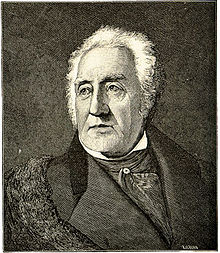 By the mid-1830s the opium trade had become "the largest commerce of its time in any single commodity, anywhere in the world." Russell & Co. and the Scotch firm Jardine-Matheson, then the world's largest opium dealer working together were known as the "Combination."
By the mid-1830s the opium trade had become "the largest commerce of its time in any single commodity, anywhere in the world." Russell & Co. and the Scotch firm Jardine-Matheson, then the world's largest opium dealer working together were known as the "Combination."
George HW Bush (S&B 1948) was born in Milton, Massachusetts not far from the historic home of Robert Bennett Forbes, a Russell partner.
Opium was the tool of the capitalist classes in transforming the peasantry and in monetizing their subsistence lifestyles. Opium created pools of capital and fed the institutions that accumulated it: the banking and financial systems, the insurance systems and the transportation and information infrastructures. Those structures and that economy have, in large part, been inherited by the successor nations of the region today.
Many historians discount the American activity in the opium trade, generally concentrating on the British and their mercantilist trading syndicate, the British East India Company. Because of the Navigation Act of 1651, Americans "were not permitted to sail their own ships to the Orient," they were required as colonists and subjects to buy all their Chinese goods in London from the East India Company. The East India Company’s monopoly on the tea trade was more of a reason for the American Revolution than the cost of the tax.
With a solid "connection," a strong family framework and firm financial backing Perkins & Company became the leader in the American pack. It was a family affair. Thomas H. was brother-in-law of Russell Sturgis, an uncle to J.P. Cushing and brothers John M. and Robert B. Forbes. Joshua Bates, a partner in Baring Brothers Bank Commitee of 300, handled the family business in London. He was married to a Sturgis. Russell Sturgis's grandson later became Chairman of the Board of Barings.
Samuel Russell and Phillip Ammidon came to Canton in 1824, Russell having first been there in 1818 as a business representative for a merchant house out of Providence R.I. Ammidon went on to India to serve as the firm's opium buyer. In "a series of accidents and coincidental decisions" Russell & Company acquired a "virtual" monopoly on the American portion of the trade in the 1830's. Other eastern merchants failed, died, or retired like John Jacob Astor. Perkins & Company, resident partner in Canton, Thomas T. Forbes was drown in August of 1829, and he carried a letter which gave Russell "charge of the firm's [Perkin's] business."
The "Combination", Russell & Company and the Scotch firm Jardine-Matheson, the largest opium trader, together developed a new trade up and down the China coast—the romantic opium clipper—and helped to spread the use of the opium further in China. After the first "Opium War" Russell & Co. became the third largest dealer in opium in the world.
Among Russell's partners was Warren Delano, Jr., Chief of RUSSELL TRUST operations in Canton, CHINA.
Delano was the grandfather of President Franklin Delano Roosevelt, another Bush cousin.
Joseph Coolidge, whose son organized the UNITED FRUIT COMPANY, and his grandson, Archibald Cary Coolidge, who was a founding executive officer of the COUNCIL ON FOREIGN RELATIONS.
Those tapped yearly for S&B have gone on to positions of enormous power.
UNCLE SAM'S WATCHING EYE.
Although all quiet in Shanghai, periodic peaceful patrols through the City, help "keep the peace." China. As the soldiers march down the street, various shots as they carry the American flag with them. Various shots as people stand at the side and watch as they march past. <more>
Barings Bank (1762 to 1995)
1783 Baring Brothers become premier merchant of the opium trade.
was the oldest merchant bank in London, founded and owned by the German-origined Baring family.[1] The bank collapsed in 1995 after one of the bank's employees, Nick Leeson, lost £827 million ($1.3 billion) due to speculative investing, primarily in futures contracts, at the bank's Singapore office. Successor ING Group
A fall off in business and a lack of good leadership in 1820s caused Barings to cede its dominance in the City of London to the rival firm of N M Rothschild & Sons. Barings remained a powerful firm, however, and in the 1830s the leadership of new American partner Joshua Bates, together with Thomas Baring, son of Sir Thomas Baring, 2nd Baronet, began a turnaround. Bates advocated a shift in Barings' efforts from Europe to the Americas, believing that greater opportunity lay in the West. In 1832, a Barings office was established in Liverpool specifically to capitalize on new North American opportunities.
The Baring family is a German and British banking family, descended from Johann (John) Baring (1697–1748), a wool merchant of Bremen. He founded a merchant house in Exeter in 1717. His sons Francis Baring and John Baring moved to London, where they founded the John and Francis Baring Company, commonly known as Barings Bank, in 1762. Barings Bank become one of the leading London merchant banks.[1] Francis Baring was the father of Sir Thomas Baring, 2nd Baronet, who was the father of Alexander Baring, 1st Baron Ashburton. Sir Francis Baring, 2nd Baronet was also the father of Henry Baring and the grandfather of Edward Baring, 1st Baron Revelstoke and Evelyn Baring, 1st Earl of Cromer. Arnulf Baring is a member of the branch of the family resident in Germany. The family's descendants include Diana, Princess of Wales, whose great-grandmother was Margaret Baring, the daughter of Edward Baring, 1st Baron Revelstoke, and through her Prince William, Duke of Cambridge.
Russell Sturgis: his grandson by the same name was chairman of the Barings Bank in England, financiers of the Far East opium trade.
! 1843 Port of Shanghai opened to foreign trade.
PROMINENT AMERICAN DRUG DEALERS OF THE 19TH CENTURY
http://www.scribd.com/doc/31032550/The-China-Trade-and-The-Opium-Wars
The bank collapsed in 1890 following a default on debt repayments by the Argentine government. That led to the Bank of England intervening in the British banking system for the first time; the Bank of England injected some 17 million pounds to keep the bank from suspending payments and to prevent financial catastrophe. The business was later refounded and control was passed back to descendants of the original founders.
London bank Baring Brothers and Company failed, resulting in the financial Panic of 1893
- John & Francis Baring & Company. At first he acted merely as an import and export commission agent for other merchants, but the house of Baring, known as Baring Brothers and Company after 1806, also bought merchandise on its own account, lent its credit in the form of acceptances, and received deposits of friends and clients. It became a key aid to the British government in financing the wars against France after 1792. His house led in financing U.S. trade and marketing U.S. bonds, 1815–60; for its subsequent history. By the 1830s it was one of the world`s most important banking houses,underwriting the purchase of Louisiana from the French and financing much of the railroad development in North America.
Baring Brothers
1995 the leading Baring trader in Singapore, Nicholas Leeson, lost a significant sum from its assets in unauthorized transactions, mainly high-risk derivative contracts. Courts appointed the international accounting firm of Ernst & Young to administer the assets of the bank and arrange its sale to another company. The bank was able to resume trading in March 1995 after being purchased by a Dutch company, Internationale Nederlanden Groep NV. Sir Francis also underwrote marine insurance and took an active part in the management of the East India Company, of which he was head in the year 1792–93.
East India Company formed for the exploitation of trade with East and Southeast Asia and India, incorporated by royal charter on December 31, 1600. Starting as a monopolistic trading body, the company became involved in politics and acted as an agent of British imperialism in India from the early 18th century to the mid-19th century. In addition, the activities of the company in China in the 19th century served as a catalyst for the expansion of British influence there.
It was Warren Hastings idea to become opium drug running pirates.
Warren Hastings, India's first governor general, had understood both the drug's dangers and its attractions: “Opium is not a necessary of life,” he said, “but a pernicious article of luxury which ought not to be permitted except for purposes of foreign commerce only.” At his direction the company planted vast pink and white fields of opium poppies on the Ganges plain, then monopolized the sale of the drug they yielded. Hastings's encouragement paid off; opium exports to China eventually accounted for one seventh of British India's revenues.
Pirates, Profiteers Banksters, Traders, Transfers
... lots are rented by Samuel Russell, an American representing Baring Brothers. Captain Warren Delano (FDRs grandfather) becomes a member of ... in China. Russell Sturgis, who later became head of Baring Brothers in London. Opium Smuggler John Cleve Green 1800-1875 funds Princeton ...
52. Ashburton, [ Alexander Baring, lst Baron ]. Small slip of paper with Ashburton’s signature at the close of a letter. On reverse is memo of donations[?] to ”Kirk and School” 1808-1810. (Ashburton (1774-1848) managed his father’s financial house of Baring Brothers and Company, is made a peer in 1835.) http://www.mnhs.org/library/findaids/01074.xml#a9
... Example: The Peerage Pedigree John Francis Harcourt Baring, 7th Baron Ashburton The Conspirators Hierarchy: The Committee ...
Corporations and Maritime Time Line
... East India Company during this period was controlled by the Baring Brothers Bank (Toward the closing decades of the 17th century, the British House of Rothschild would supplant the Baring Brothers as the controlling financial interests in the China opium ...
... years. 1820: the Tutein brothers; Mr. Black's widow; Baring Brothers & Company . The slavery connections of Northington ... real and material source of wealth and power” Alexander Baring on Britain's slave colonies in the Caribbean (1831) The research ...
2) Russell Bank The Bund Shanghai China
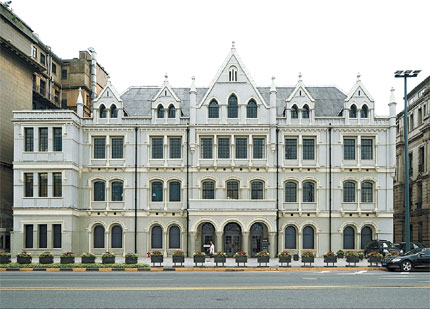 Samuel Russell, an American representing the ENGLISH BARING BROTHERS
Samuel Russell, an American representing the ENGLISH BARING BROTHERS
In 1823 a 24 year old Yankee, Warren Delano, sailed to Canton, where he did so well that within seven years he was a senior partner in Russell & Company. Captain Warren Delano, [ Franklin D. Roosevelt’s grandfather ], became a charter member of the Canton Regatta Club, and entered into dealings with the Hong Society. Dr. Emmanuel Josephson states, “Warren Delano, Frederic A. Delano’s father, founded his fortune on smuggling opium into China.” His son, Frederic A. Delano, was born in Hong Kong. Delano founds his fortune on opium trafficking into China, and later becomes the first vice chairman of the US Federal Reserve Board.
Massachusetts families (Coolidge, Sturgis, Forbes and Delano) joined Connecticut (Alsop) and New York (Low) opium drug smuggler-millionaires under the Russell auspices. Howqua (Chinese: 伍秉鉴; pinyin: Wu Bingjian, Cantonese: Ńg Bẽnkgâm; 1769 – 4 September 1843 was the most important of the Hong merchants in the Thirteen Factories, and the leader of the Canton Cohong - Ewo (怡和). He was once one of the richest men in the world.
After the First "Opium War", Russell & Co. Became the Third Largest Dealer in Opium
In 1851, Baring and Bates brought in another American, Russell Sturgis as partner.
Despite the embarrassment to his partners caused by his sympathies for the South in the American Civil War, Sturgis proved a capable banker and, following the death of Bates in 1864, gradually assumed a leadership role in the firm. In the 1850s and 1860s, commercial credit business provided the firm with its 'bread and butter' income.
and Chairman of Barings Bank London Sturgis Russell. Baring Brothers bank in England, sponsor of the world narcotics traffic ... Cushing. He in his own wikipedia entry is once a head of Baring Bros, London. He had country houses at Coombwood, Mt Felix and The Farm ...
SEE Russell Trust
Plutocracy
... Sturgis: his grandson by the same name was chairman of the Baring Bank in England, financiers of the Far East opium trade. Such persons as ... fractional-reserve-practicing Bank of England, the Baring Bank, and others. But China was not interested in buying British ...
THE POWER ELITE NETWORKS
1% Power Elite Networks
.. and G.C. Ward, and Ward, Campbell & Co., the U.S. agents for Baring Brothers & Co., also a charter member of the Union League Club, and ... Gray Ward Jr., was with Kidder, Peabody & Co., which became Baring's agent. (An Old Firm Retiring. New York Times, Dec. 1, 1885; Death of ...
Forbes family of China and Boston
... John M. and Robert B. Forbes. Joshua Bates, a partner in Baring Brothers Bank, handled the family business in London.
... Russell Sturgis (1805-1887) , who later became head of Baring Brothers in London . Sturgis was the second son of Thomas Sturgis, ...
"The Pilgrims organization is a cluster of intermarried old-line rich, Royals and robber barons who have created the world’s financial structure. The Pilgrim Society, a secret group of leftist international financiers and one-world intellectuals dedicated to re-uniting the United States and Great Britain." http://www.scribd.com/doc/191239234/Meet-the-World-Money-Power
ACADEMIA --> SECRET SOCIETIES & NETWORKS
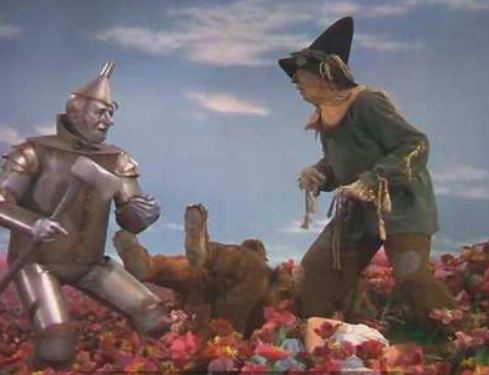
The University of London was originally financed by Jeremy Bentham of the East India Co., and John Stuart Mill.
The University of London, which received a $2 million grant in 1924 from Beardsley Rural as head of the Laura Spelman Rockefeller Fund, and many other grants from American foundations houses Gresham College and the London School of Economics, where Harold Laski taught John F. Kennedy and David Rockefeller the principles of the World Order.
The AMERICAN NSA /CIA networks and the agency’s grip on the world’s digital pipelines.
“The most interesting part of this speech was not how the president weighed individual privacy against the N.S.A.,” said Fred H. Cate, the director of the Center of Applied Cybersecurity Research at Indiana University, “but that he said little about what to do about the agency’s practice of vacuuming up everything it can get its hands on.” It is not only the government that is monitoring users of the web, it was also companies like Apple, Facebook, Twitter and Yahoo. “Corporations of all shapes and sizes track what you buy, store and analyze our data, and use it for commercial purposes,” the president said. “That’s how those targeted ads pop up on your computer and your smartphone periodically.” Translation: Corporate America wants to be able to mine Americans’ data, but fears business will be hurt when the government uses it for intelligence purposes.
See YALE UNIVERSITY BEHIND THE SCENES BY William P. Litynski
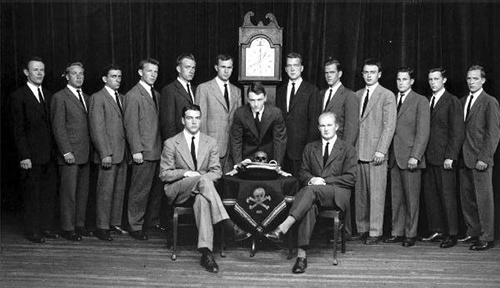
1947 The secretive Order of Skull and Bones exists only at Yale.
Fifteen juniors are "tapped" each year by the seniors to be initiated into next year's group. The group was founded to initiate the sons of the original Boston Brahmin families that were in control of the opium trade. This group in turn started the CIA which has always been used to track the money. "The Cabots provided America with more privateers than any other family." [Source: Leon Harris, Only to God: The Extraordinary Life of Godfrey Lowell Cabot (New York: Atheneum, 1967), p. 6]
The Order of Skull and Bones is a secret society founded at Yale by William Huntington Russell (S&B 1833). His cousin Samuel Russell's family enterprise, Russell & Company, was the largest American opium smuggler, working with the Scottish firm Jardine-Matheson, the world's largest. Many New England and Southern families in the "China Trade" sent their sons to Yale, and many were "tapped" into Skull and Bones. Taft, Russell, Schiff, Haremon, Bush, Warburg, Guggenheim, Rockefeller, Stemson, Weighouser, Vanderbilt, Goodyear and Pillsbury were all members. From Yale, "Bonesmen" went into and were very influential in the worlds of commerce, communications, diplomacy, education, espionage, finance, law and politics.
2013 There have been three Skull and Bones Presidents (including our nation's current leader George W. Bush), at least 10 Senators, two Chief Justices of the Supreme Court and many US representatives and state governors. Bonesmen have held myriad lesser appointed posts and positions, with a particular affinity for the Central Intelligence Agency.
Russell & Co. partner Warren Delano Jr. was the father of Frederic A. Delano, the Vice Chairman of the Federal Reserve during World War I. Former U.S. President Franklin Delano Roosevelt was the grandson of Warren Delano Jr. and the son of Sara Delano.
Other Russell partners were John Cleve Green, whose opium fortunes financed PRINCETON UNIVERSITY and Abiel Abbott Low, whose opium fortune financed the construction of COLUMBIA UNIVERSITY.
Russell & Co. partner Abiel Abbott Low was the father of Seth Low; Seth Low was the President of Columbia University from 1890 to 1901 and the Mayor of New York City from 1902 to 1903. Seth Low was the President of Columbia University during the Spanish-American War (1898- 1899) and the Chinese Boxer Rebellion (1899-1900).
11/21/13 JFK's Deeply Revealing Harvard Application Essay At 17 years old, the future president seemed to understand that the value of an elite education is in the status it offers.
The Kennedy Presidential Library and Museum has a digitized version of Kennedy's 1935 Harvard application, which includes his grades and his response to the essay prompt, "Why do you wish to come to Harvard?" Here's how the future president answered:
The reasons that I have for wishing to go to Harvard are several. I feel that Harvard can give me a better background and a better liberal education than any other university. I have always wanted to go there, as I have felt that it is not just another college, but is a university with something definite to offer. Then too, I would like to go to the same college as my father. To be a "Harvard man" is an enviable distinction, and one that I sincerely hope I shall attain. April 23, 1935 John F. Kennedy
Kennedy's essay shows a profound, if implicit, understanding of the primary value of attending an elite school:
status and personal connections, rather than mastery of academic skills and knowledge. Notice that he only makes one mention of the education he'd receive at Harvard—a passing reference to the school's superior "liberal education." The rest of the paragraph focuses on the the non-academic benefits: having a "better background," sharing the same alma mater with his dad, and enjoying the "enviable distinction" of being a Harvard Man. And it is, indeed, an enviable distinction. Harvard has produced eight United States presidents, more than any other school.
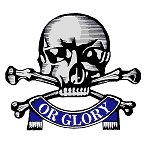 Skull and Bones Cap badge (motto) of the Queen's Royal Lancers
Skull and Bones Cap badge (motto) of the Queen's Royal Lancers
The 18th Light Dragoons were a British cavalry regiment raised in seventeen days in 1759. In 1816 they were converted to the 17th Lancers and became known as the 'Death or Glory Boys' from their skull and cross-bones badge. It was founded in 1832 by William Huntington Russell and Alphonso Taft, two students who were not admitted into Phi Beta Kappa at Yale University, in New Haven, Connecticut.The first Skull and Bones class, or "cohort", was in 1833. Skull and Bones is known by many names, including The Order of Death, The Order, The Eulogian Club, and Lodge 322. Initiates are most commonly known as Bonesmen, Knights of Eulogia, and Boodle Boys. Among the early initiates of the order were Henry Rootes Jackson (S&B 1839), a leader of the 1861 Georgia Secession Convention and post-Civil War president of the Georgia Historical Society (thus the false accounts of the ``good old slavery days'' and the ``bad northern invaders'')
Introduction to Skull and Bones | Tracing the History of Skull and Bones |
Written in 1940 in Time MAGAZINE Skull and Bones Yale's Tap Day in Stover at Yale (1911)
The Boston Brahmins
PERKINS SYNDICATE
... Thomas Handasyd Perkins a partner of Baring Brothers in London "Old Shipping Days in Boston". State ... two latter firms. He was later partner and, finally, head of Baring Brothers of London. Skull and Bones Boston Brahmins ...
John Perkins, Jr. (S&B 1840), chairman of the 1861 Louisiana Secession Convention, who fled abroad for 13 years after the Civil War; and William Taylor Sullivan Barry (S&B 1841), a national leader of the secessionist wing of the Democratic Party during the 1850s, and chairman of the 1861 Mississippi Secession Convention.
1832 East India Company monopoly of opium trafficking expires.
June 20 1832, with symbolism bordering on the vulgar, two English sailors from The Lord Amherst shouldered open the locked entrance gates of the major public building in Shanghai so that their commander could present a petition demanding that the city be opened to British trade.
1834 Warren Delano, Jr. of Fairhaven, Mass., came to China 1834 to join the house of Russell, Sturgis & Co., of Canton and Manila.
He was a partner of Russell & Co., China for two terms, 1/11840 - 12/31/1846, and 1/11861 to 12/31/1866. He was a great-uncle of ex-President F. D. Roosevelt. (L.T.R.)Writing home, Delano said he could not pretend to justify the opium trade on moral grounds, "but as a merchant I insist it has been . . . fair, honorable and legitimate," and no more objectionable than the importation of wines and spirits to the U.S. '
1840 First Opium War in China, as Chinese protest British import of drugs.
1842 The Opium War came to a end after the signing of the Treaty of Nanking. England now had control of the island of Hong Kong and from this base of operations, opium smuggling grew with each passing year.
1843 Port of Shanghai opened to foreign trade.
1846 Over 117,000 Chinese laborers brought to Western United States, feeding an imported opium trade estimated at 285,000 pounds per year into the US.
With the failure of Barings, wikipedia NM Rothschild & Sons is the only name remaining from the glory days of 19th-century British merchant banking.
N M Rothschild & Sons Limited It is the world's 31st oldest bank in continuous operation.
N M Rothschild & Sons Limited, commonly referred to as Rothschild, is a British multinational investment banking company, controlled by the Rothschild family. It was founded in the City of London, England, United Kingdom in 1811 and is now part of a global firm with 50 offices around the world. Evelyn Rothschild is the great, great, great grandson of Mayer Amschel Rothschild, and will be passing the godfather-ship down to David de Rothschild.
British Robber Barons during the First Opium War (1839-1842)
Lionel (Nathan) de Rothschild (1808-1879), a Member of Parliament for the City of London, is introduced in the House of Commons on July 26, 1858 by Lord John Russell and Mr. Abel Smith. Lionel de Rothschild was the son of Jewish banker Nathan Mayer Rothschild. (Painting by Henry Barraud, 1872; The Rothschild Archive)
http://www.scribd.com/doc/31032550/Opium-Wars-Organized-Crime
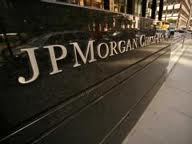 By 1906 J P Morgan's bank controlled 1/3 of America's railways and over 70% of the steel industry. He eventually had a major stake in the 20th. century's major companies. Among them ATNT, ITT, General Electric, General Motors and Du Pont.
By 1906 J P Morgan's bank controlled 1/3 of America's railways and over 70% of the steel industry. He eventually had a major stake in the 20th. century's major companies. Among them ATNT, ITT, General Electric, General Motors and Du Pont.
John Pierpont Morgan (1837-1913), was being groomed for business. He was sent to Boston’s English high school and then to German universities in Stutingen and Gottingen. The year 1861, was auspicious for young Pierpont. He started his own bank in New York, calling it J.P. Morgan & Co. He sold European securities underwritten by his father’s bank in England. That was also the first year of the Civil War. Pierpont was 24 and like Andrew Carnegie, Grover Cleveland, Philip Armour, John D. Rockefeller and other privileged young members of the elite class, he paid to avoid military service. Also, like other Robber Barons, he profited greatly from this war and the string of other U.S. wars that followed.
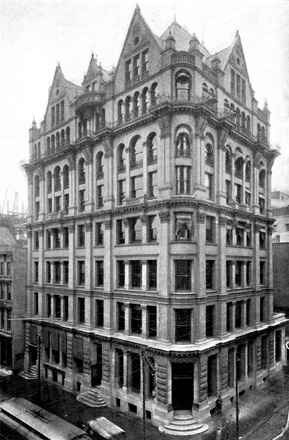 Brown Brothers Harriman
Brown Brothers Harriman
Our Philadelphia office, the first House of Brown in the North America, was opened in 1818.
Partners in Banking, Brown Brothers & Co. in New York and Philadelphia and Brown Shipley business in Great Britain.
Brown Brothers Harriman & Co
1531 Walnut Street
Philadelphia, Pennsylvania 19102-3098
(215) 587-6310
Arthur Schlesinger, Jr., wrote, "These men helped establish a distinguished network connecting Wall Street, Washington, worthy foundations and proper clubs. The New York and legal community was the heart of the American Establishment. Its household deities were Henry L. Stimson and Elihu Root* ; its present leaders, Robert A. Lovett and John J. McCloy; its front organizations, the Rockefeller, Ford and Carnegie foundations and the Council on Foreign Relations (CFR). " [* T. Roosevelt's Secretary of War—after W.H. Taft—and Stimson's senior law partner]
Robert A. Lovett was Assistant Secretary of War for Air (1941-1945), Secretary of Defense (1951-53), and a leading member of the CFR. Until his death in 1986, Lovett was one of the "most powerful men in the United States for nearly 40 years."
And as a partner in the investment house of Brown Brothers, Harriman, Lovett had connections to Brown Brothers Harriman operates in 17 locations throughout North America, Europe and Asia.
The fathers of W. Averell Harriman (S&B 1913) and Lovett were both executives for Union Pacific Railroads. Robert and the Harrimans were childhood friends.
In 1919, Averell Harriman founded WA Harriman and Company, a merchant investment house, now Brown Brothers, Harriman. Harriman took the reins of Union Pacific in 1932 serving as chairman of the board of untill 1942. Averell had a lifelong interest in Russia, first visiting there in 1899. His last visit at age 91 was in 1983. Averell invested in the USSR soon after the revolution in defiance of federal laws and regulations. The investment firms, Guaranty Trust and Brown Brothers, Harriman—both dominated by "Bonesmen"—were involved in the early financing of Communist Russia. They financed industries, established banks and developed oil and mineral resources. Later, as Minister to Great Britain in charge of Lend-Lease for Britain and Russia, Harriman created a program, that shipped entire factories into Russia and—according to some who were involved in the deal—was responsible for the transfer of nuclear secrets, plutonium and U.S. dollar printing plates to the USSR. Harriman was the US Ambassador to the Soviet Union from 1943 to1946) and was a presidential secret envoy to Soviet leaders Stalin, Krushchev, Brezhnev and Andropov. After World War II, he served as Secretary of Commerce (1946-48), special assistant to President Truman, and the U.S. representative at NATO meetings. In 1951, Averell became the Director of the Mutual Security Agency. Working with his fellow "Bonesman" Robert Lovett, who was Secretary of Defense and who had chaired the Lovett Committee in 1947, to organize US intelligence activities, they created a framework of national security apparatus belli, with "organization[s] of covert operations and 'psychological warfare.' " Harriman served a term as the Governor of New York (1954-58) and went on to dominate the Democratic national party as its "elder statesman" for the rest of his life. Robert Lovett, was asked by incoming President Kennedy to be Secretary of Defense or Treasury, he declined. But Lovett did suggested his friends, C. Douglas Dillon, investment executive and diplomat; Dean Rusk, Rockefeller Foundation president; and Robert MacNamara of Ford. These three became Treasury Secretary, Secretary of State and Secretary of Defense—the administration's most "important policy making positions"—and some of the "architects of the Vietnam War."
During the Vietnam conflict Harriman served in the State Department as Ambassador at Large for Presidents Kennedy and Johnson. He served as Under Secretary of State for Asia (1961-1963) and Under Secretary of State for Political affairs (1963-65), and led peace negotiations with North Vietnam in 1968.
"Stimson's Kindergarten" graduates, William Bundy (S&B 1939) and his brother McGeorge Bundy (S&B 1940), from their positions in the CIA, Department of Defense, the State Department and as Special Assistants to Presidents Kennedy and Johnson, exercised significant impact on the flow of information and intelligence during the Vietnam "police action."
William Bundy went on to be editor of Foreign Affairs, the influential quarterly of the Council on Foreign Relations (CFR). McGeorge became president of the Ford Foundation.
Two partners of WA Harriman and Co.' were Prescott Bush (S&B 1917) and his father-in-law, George Herbert "Bert" Walker. There were many other "Bones" directors and partners, including three from Prescott's class of 1917.
In 1919, Prescott Bush moved to St. Louis after accepting a job offer from Wallace E. Simmons (S&B 1890) in his railroad equipment company. That autumn Prescott met Dorothy, Bert Walker's daughter. That same year, Averell—who needed someone with strong international financial dealings—implored upon Bert to organize The WA Harriman & Co. Averell's brother, Roland "Bunny" Harriman (S&B 1917), was co-owner. Percy Rockefeller (S&B 1904) was a founding financial sponsor and director.
Prescott and his young family went to Connecticut in 1925,where he worked at the Harriman-controlled US Rubber Corp. Then, in 1926, his father-in-law Bert, president of WA Harriman & Company, made Prescott a vice-president. After the firm merged with Brown Brothers and became Brown Brothers, Harriman, Prescott was the managing partner.
On October 20 of 1942, ten months after Pearl Harbor, the US government ordered the seizure of "all the capital stock of the Union Banking Corporation, a New York corporation," by the US Alien Property Custodian. The government order stated "all of which shares are held for the benefit of … members of the Thyssen family, [and] is property of nationals … of a designated enemy country…" Prescott was a director and shareholder in the bank.
Averell, Bert and Prescott—using Union Banking, the Hamburg-Amerika Line and other fronts and holding companies—were directly involved in the build-up of Nazi Germany. Corporate lawyer and diplomat, John Foster Dulles, his brother, OSS and CIA spymaster, Allen Dulles, and others helped supply the Third Reich with capital, financial arrangements and asset management services.
This whole arrangement was kept very quiet, marked by only a small notice in the NY Times—years later—on Dec 16, 1944: "The Union Banking Corporation, 39 Broadway, New York has received authority to change its principal place of business to 120 Broadway." No mention was made of the fact that the property had been seized for trading with the enemy, or that 120 Broadway was the Alien Property Custodian's address.
And no 'fuss' was made at all, Prescott, later a US Senator, was still a partner in Brown Brothers, Harriman and held directorships for various companies, such as CBS, Dresser Industries, Pan-American Air, Prudential, and U.S. Guaranty and Trust.
Excerpt that Demonstrates How Networks of the Elite Pave the Way for Collusion, and How Collusion Paves the Way for Statecraft
In 1952, Eisenhower — an avid golfer — was running for President, having beaten Robert Alphonso Taft (S&B 1910) for the Republican nomination amidst fisticuffs and the first fully televised convention. Prescott a past president of the United States Golf Association was one of Ike's favorite golfing partners. Prescott's father-in-law, Bert, had also served as president of the USGA and in 1922, initiated an amateur golf tournament between the United States and Great Britain and Ireland. Walker donated the trophy and the newspapers christened it the "Walker Cup."
Prescott Bush won a special election—with Ike's help—in 1952, and became the senior US Senator from Connecticut. He served on the Armed Services Committee and helped to keep Connecticut’s huge defense contractors busy. Roland Harriman, Prescott Bush, Knight Woolley and R. Lovett - all S&B and senior Partners at Brown Brothers Harriman - 1964Prescott Bush had been an operative for Army Intelligence during World War I. He was a liaison to the British and some say he was trained by famous Stewart Menzies, WWII head of the British secret service.
Gordon Gray (another one of Prescott's golfing partners) was the first director of the Psychological Strategy Board, having been installed by the "Harriman security regime" in the early 50's. Gray and his four elite Jupiter Island, Florida, neighbors Prescott Bush, Robert A. Lovett, C. Douglas Dillion and "Jock" Whitney, are, along the Dulles and Harriman brothers considered by some historians to be the "fathers of this permanent covert action monolith". The "secret government" in the shadowy realms of intelligence operations that cloaks its actions with cries of national security.
They created this modern wall of deniality for Eisenhower deep within the government-military-industrial complex—that Ike was later to regret. One of Gray's jobs, as Ike's National Security advisor, was "under the guise of 'oversight' on all US covert action, to protect and hide" the "cryptocracy."In 1962, Prescott founded the National Strategy Information Center, with his son, Prescott Bush, Jr. and William Casey, investment banker, OSS veteran —and future CIA director. The center, among other things, laundered funds for the dissemination of "CIA authored 'news stories' to some 300 newspapers."
FEDERAL RESERVE
The Federal Reserve, Through the Collusion of Key Insiders in Government and Banking, Became Privately Owned to Consolidate the Wealth of the 1%.
Jekyll Island Federal Reserve
Federal Reserve is not a government agency and has no right to use .gov in it's domain name but should use .com or .biz
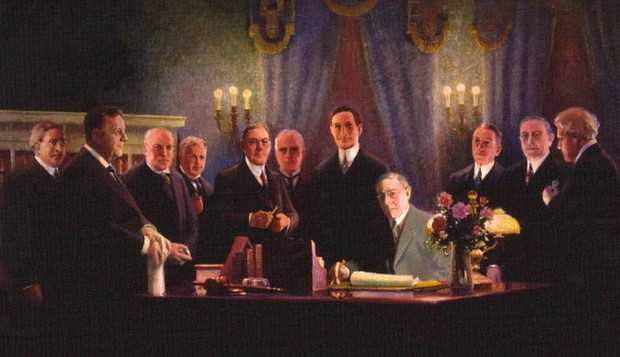
The Treason of the Senate: Aldrich, The Head of It All
by David Graham Phillips - Cosmopolitan - March 1906
Excerpt That Demonstrates the Connections Between the Skulls and Bones Secret Society and the Federal Reserve
Alphonso Taft was the founder of an American political dynasty, and a Bonesman alongside William H. Russell in the Class of 1833. He descended from Peter Robert Taft who had migrated to America from England in 1640 and Alphonso was the father of President Wililam H. Taft.
As U.S. Attorney General in 1876-77, Alphonso Taft helped organize the backroom settlement of the deadlocked 1876 presidential election. The bargain gave Rutherford B. Hayes the presidency (1877-81) and withdrew the U.S. troops from the South, where they had been enforcing blacks' rights.
Young William Howard Taft at Yale (S&B 1878) was U.S. President from 1909 to 1913 and the only man who has served as both President and Chief Justice of the United States. His father, Alphonso Taft (S&B co-founder 1833) was appointed Secretary of War by President Ulysses Grant, and later U.S. Attorney General.
As Attorney General, Alphonso helped fashion the commission that decided who won the 1876 election. The commission found in favor of Rutherford B. Hayes, a member of Delta Kappa Epsilon, (DKE), originally a junior secret society at Yale, and the only national Greek letter fraternity initially founded at Yale.
In 1882, Alphonso was appointed U.S. Minister to Austria-Hungary. He then moved to Russia for two years, leaving in 1886. He died in 1891. His son, William Howard Taft, appointed by President McKinley, to be the first civil governor of the Philippines, displaced a disgruntled General Arthur MacArthur (General Douglas MacArthur's father) who had been the military governor.
William Taft was elected President of the United States in 1909. During his administration, lawmakers sent Constitutional amendments to the states which provided for the direct election of Senators and a Federal Income tax.
The foundation for the Federal Reserve System was laid during Taft's administration and was signed into law furtively by his successor, Woodrow Wilson on Christmas Eve 1913.
W. H. Taft was appointed Chief Justice of the Supreme Court by President Harding in 1921, and served until his death in 1930. Teddy Roosevelt (DKE), who became president after McKinley's assassination, appointed Taft to serve as Secretary of War (1904-08). While Secretary, he was the "master overseer and troubleshooter" for the Panama Canal; provisional governor of Cuba; and acting Secretary of State, while the Secretary of State John Hay was ill.
Robert A. Lovett was Assistant Secretary of War for Air (1941-1945), Secretary of Defense (1951-53), and a leading member of the CFR. Until his death in 1986, Lovett was one of the "most powerful men in the United States for nearly 40 years." And as a partner in the investment house of Brown Brothers, Harriman, Lovett had connections to another interesting group of "Boodle Boys" ( an old slang term for members of the Order of Skull and Bones.)
President Taft made Henry L. Stimson (S&B 1888) his Secretary of War (1911-13).
https://en.wikipedia.org/wiki/Henry_L._Stimson
Stimson was appointed to high government posts by seven presidents. He was Governor General of the Philippines (1926-1928), Secretary of State under President Herbert Hoover (1929-1933) and Secretary of War under Presidents Franklin Delano Roosevelt and Harry S. Truman (1940-1946). He was "ultimately responsible" for the internment of Japanese-American citizens in WWII and oversaw the Manhattan Project, America's atomic bomb program. Stimson also took credit for swaying Truman into dropping "the bomb" on Japan. Henry groomed a generation of "cold warriors," in what was known as "Stimson's Kindergarten". Among Stimson's students were General George C. Marshall, John J. McCloy, Dean Acheson (DKE), three "Bonesmen" from the Bundy family, and Robert A. Lovett (S&B 1918).
1904 The New Imperialism
As this period of expansion came to be called, took further shape in 26th President Theodore Roosevelt’s Corollary to the Monroe Doctrine.
That year, when the government of the Dominican Republic went bankrupt, Roosevelt feared that European nations might intervene in the Hemisphere to collect their debts. Asserting the responsibilities implied by American Exceptionalism, Roosevelt declared it a moral imperative for America to police the Western Hemisphere. His Corollary to the Monroe Doctrine expanded America’s authority “in flagrant cases of such wrongdoing or impotence” to include “the exercise of an international police power” in the Western Hemisphere. In his speech to Congress on December 6, 1904, Roosevelt rejected any suspicion of imperialism. “It is not true,” he declared, “that the United States feels any land hunger or entertains any projects as regards the other nations of the Western Hemisphere.” Still, his Corollary stripped away the Monroe Doctrine’s requirement that American military action be a response to acts of aggression against either America or her neighbors in the Western Hemisphere.
It could now be based upon America’s own perception of any circumstance requiring police action.
MEDIA

THE WORLD OF FOX NEWS
John Buchanan, author of "Fixing America--Breaking the Stranglehold of Corporate Rule, Big Media, and the Religious Right" recorded in October 2004.
The 4th Estate and the Failure of Corporate Media part 2
.jpg) J.P. Morgan Interests Buy 25 of America's Leading Newspapers and Insert Editors
J.P. Morgan Interests Buy 25 of America's Leading Newspapers and Insert Editors
U.S. Congressional Record February 9, 1917, page 2947
Congressman Calloway announced that the J.P. Morgan interests bought 25 of America's leading newspapers, and inserted their own editors, in order to control the media.
The CHAIRMAN: The Chair will recognize the gentleman from Texas, a member of the [defense appropriations] committee.
Mr. CALLAWAY: Mr. Chairman, I ask unanimous consent to insert in the Record a statement that I have of how the newspapers of this country have been handled by the munitions manufacturers.
The CHAIRMAN: The gentleman from Texas asks unanimous consent to extend his remarks in the Record by inserting a certain statement. Is there any objection?
Mr. MANN: Mr. Chairman, reserving the right to object, may I ask whether itis the gentleman's purpose to insert a long list of extracts from newspapers?
Mr. CALLAWAY: No; it will be a little, short statement not over 2 ½ inches in length in the Record.
The CHAIRMAN: Is there any objection?
There was no objection.
Mr. CALLAWAY: Mr. Chairman, under unanimous consent, I insert into the Record at this point a statement showing the newspaper combination, which explains their activity in the war matter, just discussed by the gentleman from Pennsylvania [Mr. MOORE]:
“In March, 1915, the J.P. Morgan interests, the steel, ship building and powder interests and their subsidiary organizations, got together 12 men high up in the newspaper world and employed them to select the most influential newspapers in the United States and sufficient number of them to control generally the policy of the daily press in the United States.
“These 12 men worked the problems out by selecting 179 newspapers, and then began, by an elimination process, to retain only those necessary for the purpose of controlling the general policy of the daily press throughout the country.They found it was only necessary to purchase the control of 25 of the greatest papers. The 25 papers were agreed upon; emissaries were sent to purchase the policy, national and international, of these papers; an agreement was reached;the policy of the papers was bought, to be paid for by the month; an editor was furnished for each paper to properly supervise and edit information regarding the questions of preparedness, militarism, financial policies and other things of national and international nature considered vital to the interests of the purchasers.
“This contract is in existence at the present time, and it accounts for the news columns of the daily press of the country being filled with all sorts of preparedness arguments and misrepresentations as to the present condition of the United States Army and Navy, and the possibility and probability of the United States being attacked by foreign foes.
“This policy also included the suppression of everything in opposition to the wishes of the interests served. The effectiveness of this scheme has been conclusively demonstrated by the character of the stuff carried in the daily press throughout the country since March, 1915. They have resorted to anything necessary to commercialize public sentiment and sandbag the National Congress into making extravagant and wasteful appropriations for the Army and Navy under false pretense that it was necessary. Their stock argument is that it is' patriotism.' They are playing on every prejudice and passion of the American people.”
INTELLIGENCE

Yale University - Behind the Scenes
The 5th Estate Worldwide Technological enslavement by total 5 eyes
The Old Boy Colonial Surveillance Network vs. Anonymous
NSA + CIA + 5 EYES TECHNOLOGY = ECHELON
Former Yale President Timothy Dwight (left), U.S. President William Howard Taft, and Yale President Arthur Twining Hadley walktogether during a commencement at Yale University on June 21, 1911. All three men were members of Skull & Bones.(Source: Manuscripts & Archives, Yale University Library
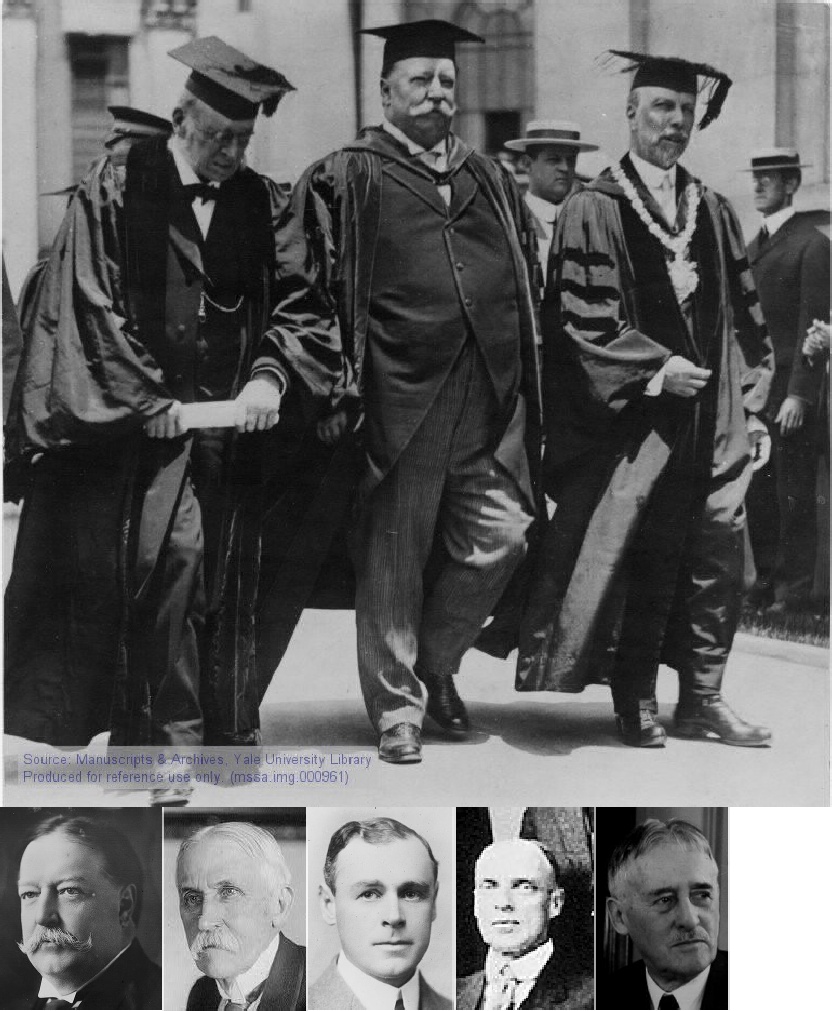
NSA TARGETING ALLIES AND ENEMIES ALIKE--THE “FIVE EYES” CLUB
when it comes to trust between governments, old Anglo-Saxon loyalties trump more modern European and Nato alliances. The only significant protection against being a western intelligence target is membership of "Five Eyes", the club of English-speaking powers: the US, UK, Canada, Australia and New Zealand – and even that may not be absolute. "Tampering in such a manner in the affairs of other countries is a breach of international law and is an affront of the principles that must guide the relations among them, especially among friendly nations. A sovereign nation can never establish itself to the detriment of another sovereign nation. The right to safety of citizens of one country can never be guaranteed by violating fundamental human rights of citizens of another country." soft power, in the form of trust, seeped away from the eavesdroppers. In realpolitik terms, it sometimes seems a superfluous commodity, but when striking a global deal depends on a handful of leaders in a room against a deadline, personal trust can go a long way. Its loss is hard to measure, but that does not make it any less substantial.
5/10/13 Privacy Breach on Bloomberg’s Data Terminals
A shudder went through Wall Street on Friday after the revelation that Bloomberg News reporters had extracted subscribers’ private information through the company’s ubiquitous data terminals to break news.
5/15/13 Detangling the $45 Million Cyberheist
In the aftermath of the recent news about an international $45 million cyberheist and ATM cash-out scheme, experts say pinpointing the source of such a massive breach can prove to be extremely difficult. That's because so many different entities are now involved in the global payments chain. "There are so many parties in the payments chain that it is very difficult to assign blame in these types of breaches," says financial fraud expert Avivah Litan, an analyst with consultancy Gartner Inc., who blogged about the attack. "There can easily be seven roundtrip hops or more between an ATM cash disbursement request and the cash disbursement. The leakage can happen at any of those points or hops." News reports this week named two payments processors that had their networks hacked, leading to the card data compromises in the $45 million cyberheist. But one is claiming it had no data intercepted, and the other has yet to make a statement. Al Pascual, senior security, risk and fraud analyst for Javelin Strategy & Research, says card data could have been obtained through any number of channels. "Couldn't these criminals just buy the cards legitimately and then breach the processor to alter the limits?" he asks. "Seems easier to me. Obtaining card data is less challenging for criminals than gaining access to a processor and altering their internal controls, though." [...]
THE NSA AND ME BY JAMES BAMFORD
THE 5TH ESTATE
THE 5TH ESTATE - Internet Anonymity is the engine of democracy that will allow us to function of a free world.
2014 International Principles on the Application of Human Rights to Communications Surveillance
13 Principles Week of Action: Secret Law is Not Law
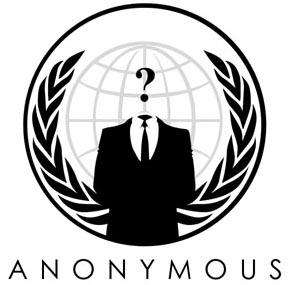 12/6/13 Octopus Enveloping The Earth US Spy Satellite Logo Not At All Subtle
12/6/13 Octopus Enveloping The Earth US Spy Satellite Logo Not At All Subtle
The Logos and patches often tell a story about the missions.
"The real menace of our republic is this invisible government which like a giant octopus sprawls its slimy length over city, state and nation. Like the octopus of real life, it operates under cover of a self created screen. At the head of this octopus are the Rockefeller Standard Oil interests and a small group of powerful banking houses generally referred to as international bankers. The little coterie of powerful international bankers virtually run the United States government for their own selfish purposes. They practically control both political parties." — New York City Mayor John F. Hylan, 1922
12/5/2013 Someone's Been Siphoning Data Through a Huge Security Hole in the Internet
In 2008, two security researchers at the DefCon hacker conference demonstrated a massive security vulnerability in the worldwide internet traffic-routing system — a vulnerability so severe that it could allow intelligence agencies, corporate spies or criminals to intercept massive amounts of data, or even tamper with it on the fly.
The traffic hijack, they showed, could be done in such a way that no one would notice because the attackers could simply re-route the traffic to a router they controlled, then forward it to its intended destination once they were done with it, leaving no one the wiser about what had occurred.
Now, five years later, this is exactly what has occurred. Earlier this year, researchers say, someone mysteriously hijacked internet traffic headed to government agencies, corporate offices and other recipients in the U.S. and elsewhere and redirected it to Belarus and Iceland, before sending it on its way to its legitimate destinations. They did so repeatedly over several months. But luckily someone did notice.
And this may not be the first time it has occurred — just the first time anyone has noticed.
Analysts at Renesys, a network monitoring firm, said that over several months earlier this year someone diverted the traffic using the same vulnerability in the so-called Border Gateway Protocol, or BGP, that the two security researchers demonstrated in 2008. The BGP attack, a version of the classic man-in-the-middle exploit, allows hijackers to fool other routers into re-directing data to a system they control. When they finally send it to its correct destination, neither the sender nor recipient is aware that their data has made an unscheduled stop.
The stakes are potentially enormous, since once data is hijacked, the perpetrator can copy and then comb through any unencrypted data freely — reading email and spreadsheets, extracting credit card numbers, and capturing vast amounts of sensitive information.
The attackers initiated the hijacks at least 38 times, grabbing traffic from about 1,500 individual IP blocks — sometimes for minutes, other times for days — and they did it in such a way that, researchers say, it couldn’t have been a mistake.
Renesys Senior Analyst Doug Madory says initially he thought the motive was financial, since traffic destined for a large bank got sucked up in the diversion. But then the hijackers began diverting traffic intended for the foreign ministries of several countries he declined to name, as well as a large VoIP provider in the U.S., and ISPs that process the internet communications of thousands of customers.
Although the intercepts originated from a number of different systems in Belarus and Iceland, Renesys believes the hijacks are all related, and that the hijackers may have altered the locations to obfuscate their activity.
“What makes a man-in-the-middle routing attack different from a simple route hijack? Simply put, the traffic keeps flowing and everything looks fine to the recipient,…” Renesys wrote in a blog post about the hijacks. “It’s possible to drag specific internet traffic halfway around the world, inspect it, modify it if desired, and send it on its way. Who needs fiberoptic taps?”
[snip]
.jpg)
Office of the Director of National Intelligence
NSA diverted computers and laptops from shipping facilities to install spyware 12/29/13
The NSA’s “Tailored Access Operations” (TAO) has been diverting desktops and laptops shipped to U.S. consumers and installing spyware on them. According to the report, the process, which TAO calls “interdiction,” involves intercepting packages on their way from manufacturers like Dell, Cisco, and Seagate, and installing bugs or spyware on them at a “secret workshop.” The packages are then reintroduced into the delivery pipeline and arrive at their destination without the consumer ever realizing their machine has been compromised.
Drugs … is the biggest business on the planet.
The CIA's War On Drugs is a Sham. How Is this Possible if the Most Powerful Drug Runners in the World Are IN the CIA? They are There to Track Their Money Around the Globe and Make Sure it Gets in their Pockets.
HSBC Whistleblower Speaks, Uncovered Terrorist Financing
opposition to statecraft
Addicted to war: Since 1776, US has been at war 93% of the time - That's 222 out of 239 years!
The U.S. has only been at peace for 21 years total since its birth.
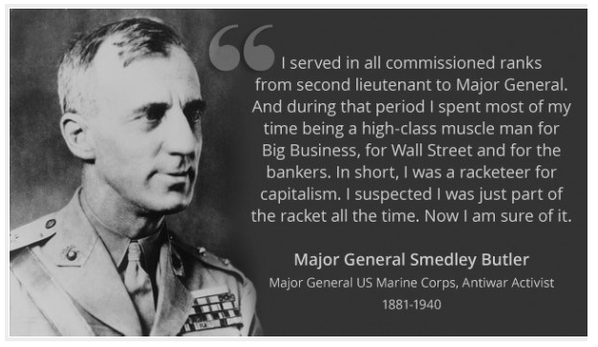
Marine Corps Major General Smedley Darlington Butler
SEE SEE WAR IS A RACKET also PDF below
https://en.wikipedia.org/wiki/Smedley_Butler
In his 1935 book War is a Racket, he described the workings of the military-industrial complex and, after retiring from service, became a popular speaker at meetings organized by veterans, pacifists and church groups in the 1930s.
Born in West Chester, Pennsylvania his father was a lawyer, a judge and, for 31 years, a Congressman and chair of the House Naval Affairs Committee during the Harding and Coolidge administrations. His maternal grandfather was Smedley Darlington, a Republican Congressman from 1887 to 1891.
He went to Haverford School, a secondary feeder school popular with sons of upper-class Philadelphia families of the 1%.
https://en.wikipedia.org/wiki/General_of_the_Army_Dwight_Eisenhower
-
SKULL AND BONES ... Thomas Stalker Butler (1855 - 1928), the father of Smedley Darlington Butler was a lawyer and politician and in 1897 ... as a decorated war hero: famous u.s. marine calls out skull & bones induced corruption of cia Retired Marine
-
Plutocracy ... the 34th President of the United States. And like Marine Corps General Smedley Butler - both know war is a racket and warns everyone who would listen.
-
The Logan Act ... FDR and put a Fascist state in place. See Smedley Butler the great Marine Hero spoiled their plan. Prescott Bush and Hitler ...
WAR IS A RACKET
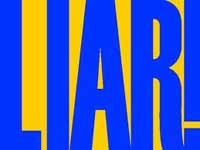 George W. Bush's CIA Briefer: Bush and Cheney Falsely Presented WMD Intelligence to Public
George W. Bush's CIA Briefer: Bush and Cheney Falsely Presented WMD Intelligence to Public
On "Hardball," Michael Morell concedes the Bush administration misled the nation into the Iraq War. George W. Bush, Dick Cheney, & Co. were not misled by lousy intelligence; they used lousy intelligence to mislead the public. Michael Morell, a longtime CIA official who eventually became the agency's deputy director and acting director. During the preinvasion period, he served as Bush's intelligence briefer. Appearing on MSNBC's Hardball on Tuesday night, Morell made it clear: The Bush-Cheney administration publicly misrepresented the intelligence related to Iraq's supposed WMD program and Saddam's alleged links to Al Qaeda. The Bush White House made a "false presentation" on "some aspects" of the case for war. "That's a big deal," Matthews exclaimed. Morell replied, "It's a big deal." And there's more. Referring to the claims made by Bush, Cheney, and other administration officials that Saddam was in league with Al Qaeda, Morell noted, "What they were saying about the link between Iraq and Al Qaeda publicly was not what the intelligence community" had concluded. He added, "I think they were trying to make a stronger case for the war." That is, stronger than the truth would allow. Morell's remarks support the basic charge: Bush and Cheney were not misled by flawed intelligence; they used the flawed intelligence to mislead.
Vice President Dick Cheney’s primary function under George W. Bush was to distribute contracts to his old employer, Halliburton, as well as to lay the groundwork for the pretext necessary to get the United States involved in a war.
Can it really be that simple? The best way to answer that question is to examine and analyze the governing boards of Halliburton throughout its history—a time-consuming process. In an essay called “The Halliburton Riddle,” we stated: “Connally, Rumsfeld, Cheney and Armstrong—of those four, three would serve as directors of Halliburton. The fourth, Rumsfeld, as Secretary of Defense would help George W. Bush engineer the war in Iraq, to Halliburton’s benefit.” Thus it was intimated that there is a definite connection between that corporate clique and the policy decisions being made in George W. Bush's White House, and that, to a great degree, those policy decisions are concerned primarily with trade deficits and currency stabilization—issues with which the United States has been dealing throughout its history. ~ Linda Minor http://www.minormusings.com/
1953 - I like Ike – 5 Star Army General Eisenhower
https://en.wikipedia.org/wiki/General_of_the_Army_Dwight_Eisenhower
becomes the 34th President of the United States
Eisenhower entered the 1952 presidential race as a Republican to counter the non-interventionism of Senator Robert A. Taft and to crusade against "Communism, Korea and corruption".
WAR IS A RACKET
Both highly decorated military men Smedley Butler and Dwight D. Eisenhower knew that war was and still is a racket and told everyone who would listen.
1953 during Eisenhower's first term America entered the era of covert activity. Using the newly established CIA and the State Department run by Allen Dulles and his brother John Foster Dulles corporate interests wielding power in Washington to compel actions in their own economic interest. In this way, the CIA’s conduct increasingly blurred the line between America’s national interest and the private interests of entities friendly to the U.S. Government.
Ben Bradlee on government lying
The big lie that Bradlee ends his speech with with is the North Vietnamese "attack" on US ships in the Tonkin Gulf in August 1964, which produced the Congressional joint resolution that was the legal underpinning for the entire US war on Vietnam. Many more facts have come out since Bradlee's 1987 lecture, including declassified NSA histories reporting on the incident, plus eyewitness accounts from pilots and seamen there at the time.
The short version is that the Kennedy and Johnson administrations had covertly violated the Geneva Accords by introducing a foreign (US) military presence into the area, originally by the CIA, then by DoD. This included joint Navy/NSA ships doing surveillance on Vietnamese coastal defense radars and military radio networks. One of these ships, the Maddox, part of a longer term NSA "DESOTO" intelligence mission, was covertly supporting the Army of South Vietnam by monitoring North Vietnamese military radio traffic and reporting it to the South Vietnamese via US "advisors". It was ordered to provoke the Vietnamese navy by violating its territorial waters (allowing NSA to monitor coastal defense transmissions). On August 2, 1964, the Maddox, on a mission with NSA SIGINT Activity Designator USN-467N, fired first on three Vietnamese patrol boats, which then returned torpedos and machine-gun fire. The Maddox responded with shells, disabled several Vietnamese ships and killed their seamen. The Maddox received only minor damage from a single machine-gun bullet. The incident was widely reported in the press, omitting the incriminating details that the ship was NSA's, helping the South Vietnamese military, in waters claimed by North Vietnam, and that the US ship had fired first. Two days later on August 4, on another provcation mission in bad weather, the Maddox thought it heard a torpedo, and spent hours firing on "ghosts" in its sonar screen. No debris or bodies were ever found. Ultimately the crew and commander concluded that there had been no Vietnamese boats anywhere nearby, but NSA and the Navy and the Secretary of Defense all reported to the President that the Vietnamese navy had attacked our ship. Pres. Johnson reorted that to Congress and to the public, simultaneously interrupting shows on all three US TV networks for the late-night public announcement. The first of what became literally millions of US bombs were dropped on North Vietnam that night, on Johnson's orders. Congress was rushed three days later into rubber-stamping a joint resolution authorizing what became the entire decade-long War in Vietnam, despite a still-anonymous whistleblower alerting Senator Wayne Morse to the deception. The deception only became public many years later when whistleblower Daniel Ellsberg's Pentagon Papers were published, despite the active opposition and prosecution by the US Government. (The New York Times reported that between 2002-5, some of the above history remained classified because Bush Administration officials thought it would remind people too much of how Congress was being stampeded into approving the War in Iraq with nonexistent evidence in 2003.)
Meet Executive Order 12333: The Reagan rule that lets the NSA spy on Americans
 STATECRAFT PROVES THIS IS NOT A CONSPIRACY THEORY
STATECRAFT PROVES THIS IS NOT A CONSPIRACY THEORY
BUT A SURVEILLANCE STATE POLICY
12333 is not a statute and has never been subject to meaningful oversight from Congress or any court.
Order 12333 violates the Fourth Amendment, which prohibits unreasonable searches and seizures.
John Napier Tye served as section chief for Internet freedom in the State Department’s Bureau of Democracy, Human Rights and Labor from January 2011 to April 2014. He is now a legal director of Avaaz, a global advocacy organization.
7/18/14 In March I received a call from the White House counsel’s office regarding a speech I had prepared for my boss at the State Department. The speech was about the impact that the disclosure of National Security Agency surveillance practices would have on U.S. Internet freedom policies. The draft stated that “if U.S. citizens disagree with congressional and executive branch determinations about the proper scope of signals intelligence activities, they have the opportunity to change the policy through our democratic process.”
But the White House counsel’s office told me that no, that wasn’t true. I was instructed to amend the line, making a general reference to “our laws and policies,” rather than our intelligence practices. I did. Even after all the reforms President Obama has announced, some intelligence practices remain so secret, even from members of Congress, that there is no opportunity for our democracy to change them.
Public debate about the bulk collection of U.S. citizens’ data by the NSA has focused largely on Section 215 of the Patriot Act, through which the government obtains court orders to compel American telecommunications companies to turn over phone data. But Section 215 is a small part of the picture and does not include the universe of collection and storage of communications by U.S. persons authorized under Executive Order 12333.
From 2011 until April of this year, I worked on global Internet freedom policy as a civil servant at the State Department. In that capacity, I was cleared to receive top-secret and "sensitive compartmented" information. Based in part on classified facts that I am prohibited by law from publishing, I believe that Americans should be even more concerned about the collection and storage of their communications under Executive Order 12333 than under Section 215.
Bulk data collection that occurs inside the United States contains built-in protections for U.S. persons, defined as U.S. citizens, permanent residents and companies. Such collection must be authorized by statute and is subject to oversight from Congress and the Foreign Intelligence Surveillance Court. The statutes set a high bar for collecting the content of communications by U.S. persons. For example, Section 215 permits the bulk collection only of U.S. telephone metadata — lists of incoming and outgoing phone numbers — but not audio of the calls.
Executive Order 12333 contains no such protections for U.S. persons if the collection occurs outside U.S. borders. Issued by President
Ronald Reagan in 1981 to authorize foreign intelligence investigations, 12333 is not a statute and has never been subject to meaningful oversight from Congress or any court. Sen. Dianne Feinstein (D-Calif.), chairman of the Senate Select Committee on Intelligence, has said that the committee has not been able to “sufficiently” oversee activities conducted under 12333.
Unlike Section 215, the executive order authorizes collection of the content of communications, not just metadata, even for U.S. persons. Such persons cannot be individually targeted under 12333 without a court order. However, if the contents of a U.S. person’s communications are “incidentally” collected (an NSA term of art) in the course of a lawful overseas foreign intelligence investigation, then Section 2.3(c) of the executive order explicitly authorizes their retention. It does not require that the affected U.S. persons be suspected of wrongdoing and places no limits on the volume of communications by U.S. persons that may be collected and retained.
"Incidental" collection may sound insignificant, but it is a legal loophole that can be stretched very wide. Remember that the NSA is building a data center in Utah five times the size of the U.S. Capitol building, with its own power plant that will reportedly burn $40 million a year in electricity.
"Incidental collection" might need its own power plant.
A legal regime in which U.S. citizens’ data receives different levels of privacy and oversight, depending on whether it is collected inside or outside U.S. borders, may have made sense when most communications by U.S. persons stayed inside the United States. But today, U.S. communications increasingly travel across U.S. borders — or are stored beyond them. For example, the Google and Yahoo e-mail systems rely on networks of “mirror” servers located throughout the world. An e-mail from New York to New Jersey is likely to wind up on servers in Brazil, Japan and Britain. The same is true for most purely domestic communications.
Executive Order 12333 contains nothing to prevent the NSA from collecting and storing all such communications — content as well as metadata — provided that such collection occurs outside the United States in the course of a lawful foreign intelligence investigation. No warrant or court approval is required, and such collection never need be reported to Congress. None of the reforms that Obama announced earlier this year will affect such collection. Without any legal barriers to such collection, U.S. persons must increasingly rely on the affected companies to implement security measures to keep their communications private. The executive order does not require the NSA to notify or obtain consent of a company before collecting its users’ data.
The attorney general, rather than a court, must approve “minimization procedures” for handling the data of U.S. persons that is collected under 12333, to protect their rights. I do not know the details of those procedures. But the director of national intelligence recently declassified a document (United States Signals Intelligence Directive 18) showing that U.S. agencies may retain such data for five years.
Before I left the State Department, I filed a complaint with the department’s inspector general, arguing that the current system of collection and storage of communications by U.S. persons under Executive Order 12333 violates the Fourth Amendment, which prohibits unreasonable searches and seizures. I have also brought my complaint to the House and Senate intelligence committees and to the inspector general of the NSA.
I am not the first person with knowledge of classified activities to publicly voice concerns about the collection and retention of communications by U.S. persons under 12333. The president’s own Review Group on Intelligence and Communication Technologies, in Recommendation 12 of its public report, addressed the matter. But the review group coded its references in a way that masked the true nature of the problem.
At first glance, Recommendation 12 appears to concern Section 702 of the FISA Amendments Act, which authorizes collection inside the United States against foreign targets outside the United States. Although the recommendation does not explicitly mention Executive Order 12333, it does refer to “any other authority.” A member of the review group confirmed to me that this reference was written deliberately to include Executive Order 12333.
Recommendation 12 urges that all data of U.S. persons incidentally collected under such authorities be immediately purged unless it has foreign intelligence value or is necessary to prevent serious harm. The review group further recommended that a U.S. person’s incidentally collected data never be used in criminal proceedings against that person, and that the government refrain from searching communications by U.S. persons unless it obtains a warrant or unless such searching is necessary to prevent serious harm. The White House understood that Recommendation 12 was intended to apply to 12333. That understanding was conveyed to me verbally by several White House staffers, and was confirmed in an unclassified White House document that I saw during my federal employment and that is now in the possession of several congressional committees. In that document, the White House stated that adoption of Recommendation 12 would require “significant changes” to current practice under Executive Order 12333 and indicated that it had no plans to make such changes.
All of this calls into question some recent administration statements. Gen. Keith Alexander, a former NSA director, has said publicly that for years the NSA maintained a U.S. person e-mail metadata program similar to the Section 215 telephone metadata program. And he has maintained that the e-mail program was terminated in 2011 because “we thought we could better protect civil liberties and privacy by doing away with it.” Note, however, that Alexander never said that the NSA stopped collecting such data — merely that the agency was no longer using the Patriot Act to do so. I suggest that Americans dig deeper. Consider the possibility that Section 215 collection does not represent the outer limits of collection on U.S. persons but rather is a mechanism to backfill that portion of U.S. person data that cannot be collected overseas under 12333.
Proposals for replacing Section 215 collection are currently being debated in Congress. We need a similar debate about Executive Order 12333. The order as used today threatens our democracy. There is no good reason that U.S. citizens should receive weaker privacy and oversight protections simply because their communications are collected outside, not inside, our borders. I have never made any unauthorized disclosures of classified information, nor would I ever do so. I fully support keeping secret the targets, sources and methods of U.S. intelligence as crucial elements of national security. I was never a disgruntled federal employee; I loved my job at the State Department. I left voluntarily and on good terms to take a job outside of government. A draft of this article was reviewed and cleared by the State Department and the NSA to ensure that it contained no classified material.
When I started at the State Department, I took an oath to protect the Constitution of the United States. I don’t believe that there is any valid interpretation of the Fourth Amendment that could permit the government to collect and store a large portion of U.S. citizens’ online communications, without any court or congressional oversight, and without any suspicion of wrongdoing. Such a legal regime risks abuse in the long run, regardless of whether one trusts the individuals in office at a particular moment.
I am coming forward because I think Americans deserve an honest answer to the simple question: What kind of data is the NSA collecting on millions, or hundreds of millions, of Americans?
